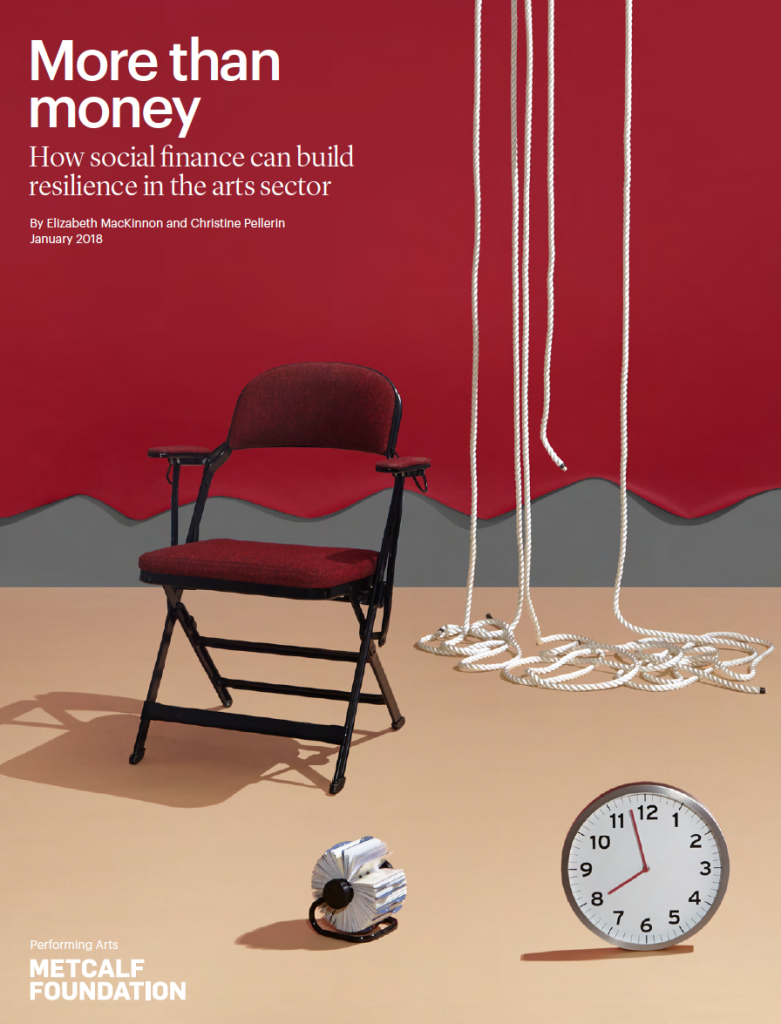More than Money: How social finance can build resilience in the arts sector breaks new ground in exploring how the non-profit arts sector in Canada could harness the power of social finance to strengthen its financial footing. Authors Elizabeth MacKinnon and Christine Pellerin survey national and international examples such as Britain’s successful Arts Impact Fund and put forward practical solutions as to how social finance could be successfully deployed across the country.
A relatively new and innovative form of financing, social finance seeks to mobilize capital for the public good. Currently used by many sectors, it has emerged as one of the most promising tools for investors to finance projects that realize both financial and social returns. As the report points out, a growing number of foundations, endowments, and other organizations managing pools of capital are embracing the promise of being able to organize their investments to achieve this blend of financial and social value.
With the traditional reliance upon grants and earned revenue under strain, the possibility of unlocking new pools of funds as proposed in More than Money is both compelling and enticing. MacKinnon and Pellerin conclude their report with five important takeaways on how the application of social finance to arts organizations in Canada would be beneficial.
- Increasing revenues for the sector, or helping to “grow the pie.” Social finance can add to existing arts funding sources by leveraging access to new money.
- Building financial and organizational capacity. Organizations need to be able to demonstrate “investment-readiness,” including solid financial management and the ability to present a convincing business case to an investor.
- Building resilience. Arts organizations can use social finance to diversify their sources of revenue and make longer-term (beyond a yearly funding cycle) strategic decisions.
- Contributing to the case for social benefits of the arts. Developing clear and consistent impact measures that help investors evaluate projects can also increase understanding and awareness of the value of the arts in our communities and society.
- Strengthening ties with the wider non-profit/social impact sector. By being an active player in Canada’s growing social finance movement, the arts sector can develop greater collaboration and common cause with non-arts organizations while benefiting from new models, tools, best practices, and resources.


